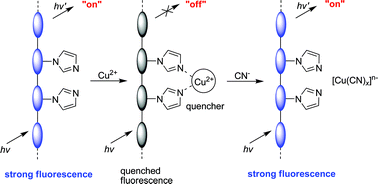An imidazole-functionalized polyacetylene: convenient synthesis and selective chemosensor for metal ions and cyanide†
Abstract
A new light-emitting polyacetylene bearing imidazole moieties in the side chain (P1), was conveniently prepared through a postfunctionalization strategy, as a sensory


 Please wait while we load your content...
Please wait while we load your content...